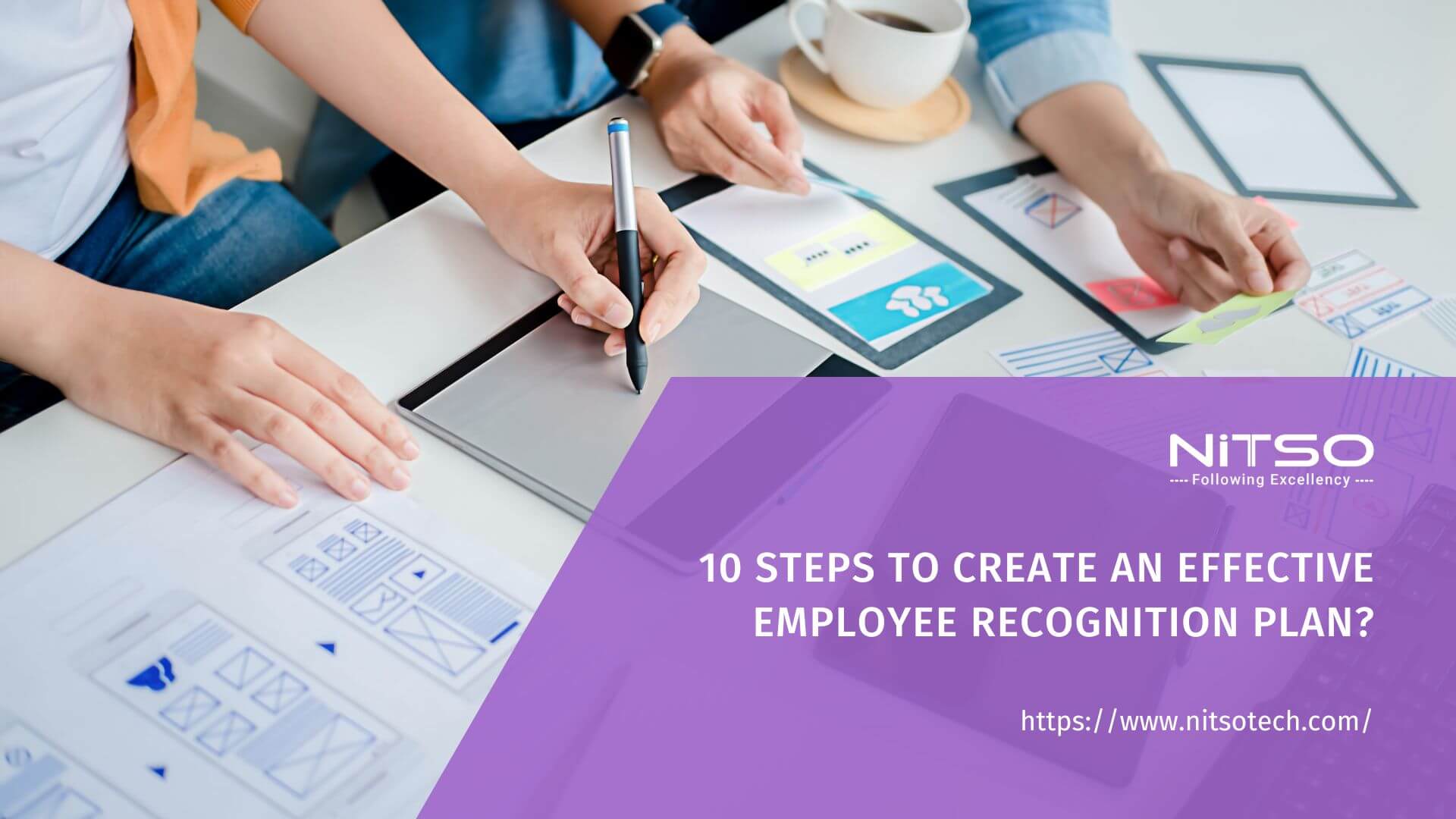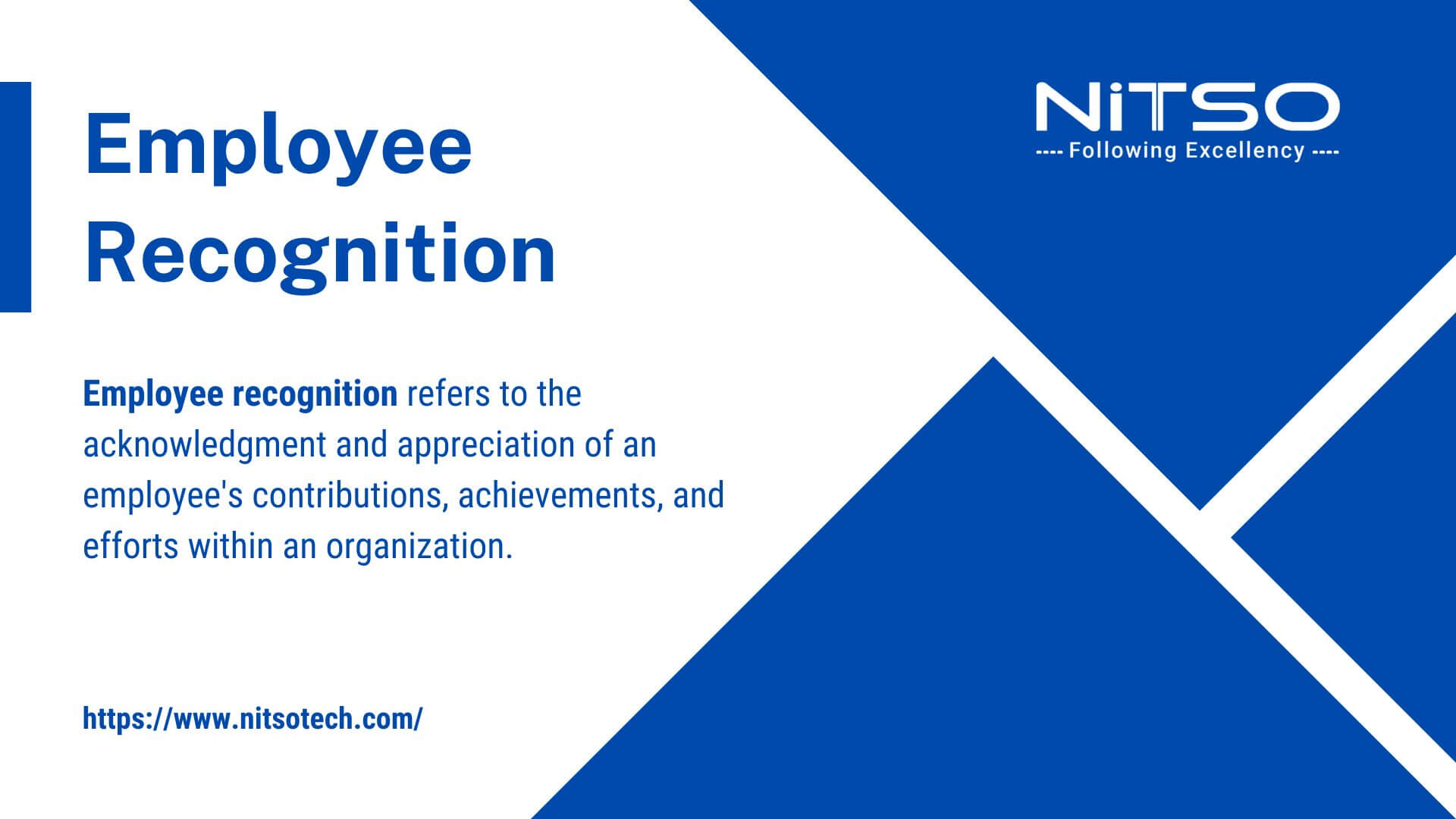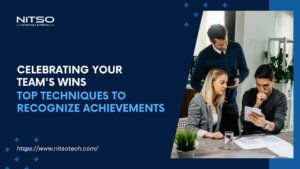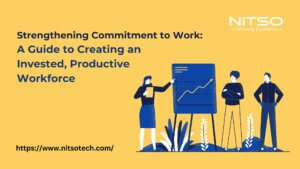In today’s competitive business landscape, attracting and retaining top talent has become a crucial priority for organizations. Employees are the driving force behind a company’s success, and recognizing their efforts and contributions is key to fostering a motivated and engaged workforce. Are you leveraging the power of employee recognition to boost morale, increase productivity, and retain your best talent?
According to a survey conducted by the Society for Human Resource Management (SHRM), 69% of employees who receive adequate recognition and praise for their work report being satisfied with their jobs. Furthermore, a study by Gallup revealed that organizations with effective recognition programs experience 14% higher employee engagement levels and 37% lower absenteeism.
Implementing an effective employee recognition program is not just a nice-to-have; it’s a strategic imperative for organizations seeking to create a positive and productive work environment. By acknowledging and celebrating the achievements of your employees, you cultivate a culture of appreciation, foster a sense of belonging, and reinforce desired behaviours that align with your company’s values and goals.
In this comprehensive guide, we’ll explore the 10 essential steps to build an effective employee recognition program tailored for Indian organizations. From defining clear objectives to measuring and continuously improving the program, we’ll provide actionable insights and best practices to help you create a recognition program that truly resonates with your workforce and drives tangible results.
Article you might be interested in What does employee recognition mean?
10 Steps to Create an Effective Employee Recognition Plan
Step 1: Define the Goals and Objectives
Building an effective employee recognition program begins with clearly defining the goals and objectives you want to achieve. Recognition initiatives should align with your organization’s overall strategy, values, and culture. By setting specific goals, you can measure the program’s success and ensure it delivers tangible benefits.
Start by identifying the key challenges or areas of improvement within your workforce. Are you aiming to increase employee engagement, boost morale, retain top talent, or foster a culture of appreciation? Each goal will shape the design and implementation of your recognition program.
For instance, if your primary objective is to improve employee retention, your recognition program should focus on acknowledging and rewarding long-term service, outstanding performance, and valuable contributions. This approach can help employees feel valued and appreciated, reducing the likelihood of them seeking opportunities elsewhere.
Alternatively, if your goal is to enhance employee engagement, your program should recognize behaviours that align with your company’s core values, such as teamwork, innovation, or customer service excellence. By reinforcing these desired behaviours, you can cultivate a more engaged and motivated workforce.
Once you have clearly defined your goals, communicate them to stakeholders, including senior leadership, managers, and employees. Ensuring transparency and alignment from the outset will help garner buy-in and support for the recognition program across the organization.
Remember, your goals and objectives may evolve over time as your organization grows and its needs change. Regularly review and adjust your recognition program to ensure it remains relevant and effective in achieving your desired outcomes.
Step 2: Establish a Recognition Committee
Creating an effective employee recognition program requires a collaborative effort. Establishing a dedicated recognition committee can ensure that the program is well-designed, implemented, and maintained consistently across the organization.
The recognition committee should be a diverse group representing various departments, levels, and backgrounds within your company. This diversity will provide a well-rounded perspective, ensuring that the program caters to the needs and preferences of your entire workforce.
Some key responsibilities of the recognition committee may include:
- Defining recognition criteria and guidelines
- Reviewing and approving nominations for recognition
- Planning and organizing recognition events or ceremonies
- Promoting and communicating the program to employees
- Collecting feedback and suggestions for improvement
- Monitoring and evaluating the program’s effectiveness
Involving employees from different levels and backgrounds in the recognition committee can foster a sense of ownership and inclusivity. It also ensures that the program reflects the unique needs and values of your organization and its workforce.
Step 3: Identify Recognition Criteria
Establishing clear and transparent recognition criteria is crucial for building an effective employee recognition program. These criteria should align with your organizational goals, values, and behaviours you wish to reinforce.
Start by identifying the specific achievements, milestones, or behaviours that deserve recognition. These may include:
- Outstanding performance: Recognize employees who consistently exceed expectations or deliver exceptional results.
- Exemplary customer service: Acknowledge employees who provide outstanding service to customers or clients.
- Innovative thinking: Celebrate employees who contribute innovative ideas or solutions that drive business growth or improve processes.
- Teamwork and collaboration: Recognize employees who foster a collaborative environment and support their colleagues.
- Leadership and mentorship: Honor individuals who demonstrate exceptional leadership skills or provide valuable guidance and mentorship to others.
Clearly define and communicate these criteria to all employees, ensuring transparency and fairness within the recognition process. Consider involving employees in the criteria-setting process to gather diverse perspectives and foster a sense of ownership.
Additionally, regularly review and update the recognition criteria to align with evolving organizational priorities and employee needs. This will help ensure that the recognition program remains relevant and impactful over time.
By establishing well-defined recognition criteria, you can create a consistent and objective framework for acknowledging and rewarding deserving employees, fostering a culture of appreciation and excellence within your organization.
Step 4: Choose the Right Recognition Methods
Effective employee recognition programs often incorporate a combination of monetary and non-monetary rewards to cater to the diverse preferences and motivations of your workforce. Choosing the right recognition methods is crucial for ensuring that your program resonates with employees and drives the desired behaviour.
Monetary Rewards
- Bonuses or cash incentives: Offer financial rewards for exceptional performance, achievements, or milestones.
- Gift cards or vouchers: Provide gift cards or vouchers for various retailers, restaurants, or experiences.
- Profit-sharing or stock options: Consider offering a stake in the company’s success through profit-sharing or stock options.
Non-Monetary Rewards
- Public recognition: Acknowledge and celebrate employees’ accomplishments in front of their peers, managers, or the entire organization.
- Additional time off: Reward employees with extra paid time off or flexible schedules.
- Professional development opportunities: Invest in employees’ growth by offering training, workshops, or mentorship programs.
- Experiential rewards: Provide unique experiences like tickets to events, travel opportunities, or exclusive access to company resources.
When selecting recognition methods, consider your employees’ preferences, the organizational culture, and the impact you want to create. Conducting surveys or focus groups can help you understand what types of rewards are most meaningful and motivating for your workforce.
Step 5: Communicate the Program Effectively
Effective communication is vital for the success of your employee recognition program. Without proper promotion and awareness, even the best-designed program may fail to engage employees and achieve its intended goals.
Develop a comprehensive communication plan that leverages various channels to reach all employees, including:
- Email campaigns: Send regular updates, announcements, and success stories related to the recognition program.
- Intranet or internal social media platforms: Create a dedicated section or page to showcase recognized employees, program details, and nomination processes.
- Town hall meetings or company-wide events: Use these opportunities to promote the program, highlight recent recognition stories, and reinforce its importance.
- Posters or digital signage: Display visuals around the workplace to keep the program top-of-mind and encourage participation.
- Manager communications: Equip managers with talking points and resources to promote the program within their teams.
Tailor your communication strategy to different employee segments, considering factors like job roles, locations, and communication preferences. Ensure that the messaging is consistent, clear, and aligns with the program’s objectives and recognition criteria.
Encourage two-way communication by providing channels for employees to ask questions, provide feedback, or share suggestions for improvement. This not only fosters transparency but also creates a sense of ownership and engagement with the recognition program.
Regular and effective communication is key to driving awareness, understanding, and participation in your employee recognition program, ultimately contributing to its overall success and impact.
Step 6: Implement a Nomination and Selection Process
To ensure fairness and credibility, your employee recognition program should have a well-defined nomination and selection process. This process should be transparent, objective, and accessible to all employees, fostering a sense of trust and inclusivity within the organization.
Nomination Process
- Implement an easy-to-use nomination system: Provide a user-friendly platform, such as an online form or dedicated email address, where employees and managers can submit nominations.
- Encourage peer-to-peer nominations: Allow colleagues to recognize and nominate each other, promoting a culture of appreciation and collaboration.
- Provide clear guidelines: Outline the nomination criteria, required information, and any supporting documentation needed for a successful submission.
- Set nomination periods or deadlines: Establish regular intervals or deadlines for accepting nominations to maintain consistency and structure within the program.
Selection Process
- Establish a recognition committee: As mentioned earlier, form a diverse committee responsible for reviewing and evaluating nominations fairly and objectively.
- Define selection criteria: Develop clear and measurable criteria aligned with your organization’s goals and recognition program objectives.
- Maintain confidentiality: Ensure that the selection process is confidential to protect the privacy of nominators and nominees.
- Provide feedback: Communicate the outcome of the selection process to nominators and nominees, offering constructive feedback when necessary.
By implementing a robust nomination and selection process, you can foster a sense of credibility and trust in your employee recognition program, encouraging active participation and engagement from your workforce.
Step 7: Celebrate and Recognize Achievements
The culmination of your employee recognition program should be the celebration and acknowledgement of deserving individuals and their accomplishments. This step is crucial for reinforcing the desired behaviours, boosting morale, and creating a lasting impact on your workforce.
Plan Recognition Events or Ceremonies
- Formal award ceremonies: Organize annual or quarterly events to formally recognize and honour employees for their exceptional contributions.
- Team or department celebrations: Celebrate achievements within smaller teams or departments, fostering a sense of camaraderie and shared success.
- Virtual or hybrid events: Embrace technology to host virtual or hybrid recognition events, ensuring inclusivity for remote or geographically dispersed employees.
Personalize the Recognition Experience
- Tailor the recognition to the individual: Customize the recognition experience by considering the recipient’s preferences, accomplishments, and personal interests.
- Involve leadership and peers: Invite senior leaders, managers, and colleagues to share personal anecdotes or testimonials, making the recognition more meaningful and impactful.
- Create lasting memories: Provide tangible mementoes, such as personalized awards, certificates, or branded merchandise, that employees can cherish and display.
Celebrating and recognizing achievements in a meaningful and personalized manner reinforces the value you place on your employees’ contributions. It creates a sense of pride, appreciation, and motivation, ultimately fostering a positive and engaging workplace culture.
Step 8: Measure and Evaluate the Program
Implementing an effective employee recognition program is an ongoing process that requires continuous monitoring and evaluation. By measuring and analyzing key performance indicators (KPIs), you can assess the program’s impact, identify areas for improvement, and make data-driven decisions to enhance its effectiveness.
Establish Measurable KPIs
- Employee engagement and satisfaction levels: Conduct regular surveys to gauge how the recognition program affects employee engagement, motivation, and job satisfaction.
- Retention and turnover rates: Track employee retention rates and analyze how the recognition program influences talent retention within your organization.
- Participation and nomination rates: Monitor the number of employees participating in the program, both as nominators and nominees, to gauge overall engagement.
- Alignment with organizational goals: Evaluate how the recognition program contributes to achieving specific organizational goals, such as increased productivity, customer satisfaction, or innovation.
Collect Feedback and Insights
- Employee surveys and focus groups: Gather direct feedback from employees on their perceptions, experiences, and suggestions for improving the recognition program.
- Manager and leadership input: Seek insights from managers and leaders on the program’s impact on their teams and areas for enhancement.
- Analyze recognition data: Review data on nominations, recognition categories, and award distribution to identify trends, gaps, or biases that need to be addressed.
By continuously measuring and evaluating your employee recognition program, you can make informed decisions to optimize its effectiveness, ensuring that it remains relevant, engaging, and aligned with your organizational goals and employee needs.
Step 9: Continuously Improve and Adapt
An effective employee recognition program is not a one-time initiative but a dynamic process that requires continuous improvement and adaptation. As your organization evolves, so should your recognition program to remain engaging, relevant, and impactful.
Review and Update the Program Regularly
- Incorporate feedback and insights: Use the feedback and data collected from program evaluations to identify areas for enhancement or modification.
- Align with organizational changes: Adjust the program to reflect any shifts in organizational goals, values, or priorities.
- Stay current with industry trends: Research and adopt best practices and emerging trends in employee recognition to keep your program fresh and innovative.
Involve Employees in the Improvement Process
- Encourage suggestions and ideas: Provide channels for employees to contribute their thoughts and suggestions for improving the recognition program.
- Pilot new initiatives: Test and gather feedback on potential program enhancements or new recognition methods before implementing them organization-wide.
By embracing a continuous improvement mindset, you can ensure that your employee recognition program remains aligned with your organization’s evolving needs and effectively motivates and engages your workforce over time.
Step 10: Ensure Sustainability and Leadership Support
For an employee recognition program to be truly effective and sustainable, it must have the unwavering support and commitment of organizational leadership. Without this backing, even the best-designed program may struggle to gain traction and long-term success.
Secure Leadership Buy-In and Commitment
- Educate leaders on the program’s value: Clearly communicate the benefits and impact of an effective recognition program on employee engagement, retention, and overall organizational performance.
- Involve leaders in the program’s design and implementation: Encourage leaders to actively participate in the recognition process, such as nominating employees or presenting awards.
- Lead by example: Ensure that leaders consistently recognize and celebrate employee achievements, setting the tone for a culture of appreciation.
Allocate Adequate Resources
- Financial resources: Allocate a dedicated budget for monetary rewards, recognition events, and program administration.
- Human resources: Assign program champions or a recognition committee responsible for managing and overseeing the program’s implementation and ongoing operations.
- Technological resources: Invest in tools and platforms that streamline the nomination, selection, and communication processes for the recognition program.
By securing leadership support and allocating the necessary resources, you can ensure the long-term sustainability and success of your employee recognition program. This commitment demonstrates the organization’s dedication to fostering a culture of appreciation and recognition, ultimately driving employee engagement, retention, and overall organizational success.
Article you might be interested in Calculating ROI of an Onboarding Program: Key Metrics and Considerations
Conclusion
Building an effective employee recognition program is a journey that requires careful planning, execution, and continuous improvement. By following the 10 steps outlined in this guide, you can create a program that not only acknowledges and celebrates the achievements of your employees but also fosters a culture of appreciation, motivation, and engagement within your organization.
Remember, recognition is not a one-size-fits-all approach. Tailor your program to align with your organization’s unique culture, values, and workforce preferences. Involve employees at every stage, from defining recognition criteria to gathering feedback and suggestions for improvement.
Investing in an effective employee recognition program is an investment in your organization’s most valuable asset – its people. By recognizing and celebrating their contributions, you not only boost morale and engagement but also strengthen your ability to attract and retain top talent.
Take the first step today and embark on the journey of building a recognition program that truly resonates with your employees and drives tangible results for your Indian organization. The rewards of a motivated, engaged, and appreciated workforce are invaluable, and the path to achieving that starts with effective employee recognition.








0 Comments